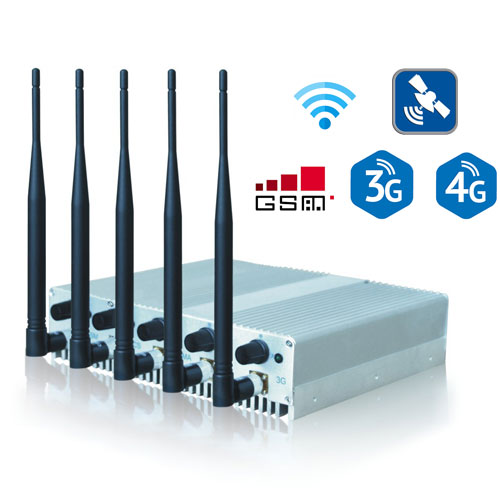Finding the Shielded Location The satellite signals come down from the sky, the wired interference signals are emitted from the ground, and the signal emission angles between them are different. It is possible to find the position where the interference wave cannot interfere or the interference is small, that is, the interference dead angle. Both the interference wave and the satellite wave are straight waves, and they will be reflected when they encounter obstacles on the way. After that, it will be reflected everywhere, and satellite waves are easily absorbed by the surface if they are not reflected by an antenna. The easiest way to find a shield location is to lower the antenna height, since military signal jammer all have a certain height when transmitting microwave jamming signals. Secondly, the surrounding natural objects can be used to avoid the surrounding strong microwave interference signals. For example, it is better to place it on the open ground than on the top of the floor; you can also move the antenna to the other side of the building, and use the building to block the direction from this direction. interference waves.
An anti-interference device is installed to determine the source orientation of the interference wave, and a metal mesh is erected on one or more sides of the antenna to block the interference wave and reflect the interference wave back. The height of the metal mesh should be higher than the high-frequency head on the satellite antenna, and it should not block the travel route of the satellite signal. Since the wavelength of the C-band signal is between 71.4mm and 88.2mm, if a metal mesh is used to shield the interference wave, in order to prevent the interference wave from leaking into the metal mesh, the mesh aperture should be less than 1/4 of the shortest wavelength of 71.4mm, that is, <17.85mm. This is the easiest, just buy some metal mesh at the hardware store, but if you get too much and block the signal, don't blame me
 The focal length-aperture ratio F/D of the feed-forward antenna commonly used for selecting short-focus antennas is between 0.3 and 0.4 (Note: F represents the focal length of the antenna paraboloid, and D represents the diameter of the antenna aperture). The feed installed at the focal point is located outside the antenna mouth, which is characterized by long focal length and high signal gain, but poor microwave interference resistance. We can use a short-focus antenna with F/D<0.25. Since the feed source is located between the antenna mouth and the reflector, the focal length is short and the anti-interference is good, but the signal gain is slightly poor.
The focal length-aperture ratio F/D of the feed-forward antenna commonly used for selecting short-focus antennas is between 0.3 and 0.4 (Note: F represents the focal length of the antenna paraboloid, and D represents the diameter of the antenna aperture). The feed installed at the focal point is located outside the antenna mouth, which is characterized by long focal length and high signal gain, but poor microwave interference resistance. We can use a short-focus antenna with F/D<0.25. Since the feed source is located between the antenna mouth and the reflector, the focal length is short and the anti-interference is good, but the signal gain is slightly poor.
The above-mentioned measures cannot be used for satellite reception in the interference area. If the signal to be received can also be received on the C-band of other satellites, it can be received by the satellite. By changing the direction of the receiving antenna, see if you can avoid the interference area of the interference wave, and you can also forward the KU band signal on the satellite to avoid interference.
To learn more about signal jammers, welcome to Jammer mart





